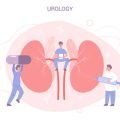Introduction to Cerebral Palsy and Rehabilitation in the UK
Cerebral palsy (CP) is a group of lifelong neurological conditions that affect movement, posture, and coordination, with symptoms varying widely among individuals. In the United Kingdom, it is estimated that approximately one in every 400 children is born with cerebral palsy, making it one of the most prevalent childhood motor disabilities across the nation. The condition often results from brain injury or abnormal development before, during, or shortly after birth. This prevalence highlights the importance of effective rehabilitation strategies within British healthcare settings, where the NHS and community-based services play a crucial role in supporting children and their families.
Current approaches to rehabilitation for children with cerebral palsy in the UK are multifaceted, involving physiotherapy, occupational therapy, and speech and language therapy as core components. These interventions are designed not only to improve physical abilities but also to enhance participation in daily activities and social inclusion. British rehabilitation services emphasise family-centred care, personalised goal setting, and collaboration between multidisciplinary teams. However, there is an increasing recognition that traditional therapy models can be further enriched by incorporating play and leisure activities—elements that are essential for holistic child development. Integrating these aspects into therapeutic programmes aligns with both clinical guidelines and the cultural understanding of childhood in the UK, where play is seen as fundamental to learning, wellbeing, and socialisation.
2. Theoretical Foundations: Importance of Play and Leisure in Child Development
Play and leisure are fundamental elements of childhood, deeply embedded in the fabric of British child development theory and policy. Understanding why these activities matter is essential when designing rehabilitation programmes for children with cerebral palsy (CP). This section explores the theoretical underpinnings that support the integration of play and leisure into paediatric rehabilitation, drawing on both classic and contemporary British perspectives.
Theoretical Rationale: Why Play and Leisure Matter
British theorists such as Susan Isaacs and Margaret McMillan have long championed play as a vehicle for learning, growth, and socialisation. Play supports cognitive development, emotional wellbeing, and physical skills—all crucial for children with CP who may experience challenges in these domains. Leisure activities, meanwhile, offer opportunities for self-expression, building confidence, and fostering inclusion within peer groups.
Key British Child Development Theories Relevant to Rehabilitation
| Theorist/Guideline | Main Contribution | Implication for CP Rehabilitation |
|---|---|---|
| Susan Isaacs | Emphasised the role of free play in problem-solving and emotional regulation | Encourages therapeutic play as a medium for developing autonomy and coping skills in children with CP |
| Margaret McMillan | Pioneered outdoor play and holistic development approaches | Supports integrating sensory-rich leisure activities to promote physical engagement and well-being |
| Early Years Foundation Stage (EYFS) Framework | National guidance outlining the importance of play-based learning in early childhood settings across England | Aligns rehabilitation goals with mainstream educational practices, promoting inclusive participation for children with CP |
| NHS Play Therapy Guidelines | Set standards for using structured play interventions within healthcare contexts | Legitimises the use of evidence-based play techniques within clinical rehabilitation programmes for CP |
Holistic Benefits of Integrating Play and Leisure
Integrating play and leisure into rehabilitation does more than address motor skills; it nurtures psychological resilience, social belonging, and independence. These benefits are reinforced by UK policies that stress the right of every child—including those with disabilities—to participate fully in community life. By grounding interventions in established theoretical frameworks, practitioners can deliver care that is both effective and culturally relevant.
![]()
3. British Cultural Context: Play and Leisure in Everyday Life
In the United Kingdom, play and leisure are not merely seen as pastimes but as vital components of childhood development, social integration, and wellbeing. Within British families, phrases such as “having a bit of fun,” “playing out,” or “getting stuck in” to activities reflect the value placed on engagement and enjoyment in daily routines. Parents often encourage children to take part in after-school clubs, weekend football matches, or community fêtes, underscoring a cultural emphasis on both structured and unstructured play. Schools across the UK also prioritise inclusive play through dedicated “playtimes” and “breaks,” where children are encouraged to make use of outdoor spaces like playgrounds or the local park. These environments are typically adapted with accessible equipment and sensory gardens to ensure all pupils, including those with cerebral palsy, can participate fully.
British communities further reinforce the significance of leisure by organising events such as “family fun days,” “sports days,” and community picnics. Local councils invest in accessible leisure centres and inclusive swimming sessions, recognising that participation fosters a sense of belonging for disabled children and their families. The use of person-first language—such as referring to a child as “a young person with cerebral palsy”—reflects a broader cultural commitment to dignity and inclusion. Additionally, many schools follow guidelines from organisations like Scope or the National Autistic Society to implement reasonable adjustments, ensuring every child can join in on equal terms.
This holistic approach aligns with the British custom of fostering resilience (“keep calm and carry on”) while simultaneously promoting joy and connection. By weaving play and leisure into rehabilitation practices for children with cerebral palsy, professionals can leverage these deeply rooted cultural values to enhance therapeutic outcomes and encourage lifelong participation in community life.
4. Practical Strategies for Integrating Play in Rehabilitation
Effectively weaving play and leisure activities into rehabilitation programmes for children with cerebral palsy requires a considered blend of structure and spontaneity. Both types of play—structured and unstructured—have unique roles in fostering engagement, motivation, and progress within therapeutic settings. The following strategies provide detailed guidance tailored to British contexts, drawing on common resources, local environments, and cultural preferences.
Structured Play Activities
Structured play involves planned activities guided by therapists or caregivers with specific therapeutic goals in mind. In the UK, these may be incorporated into both NHS and community-based rehabilitation settings. Examples include:
| Activity | Therapeutic Goal | British Context Example |
|---|---|---|
| Obstacle Courses | Enhance gross motor skills, balance, and coordination | Set up using cones, bean bags, and soft mats at a local community centre or school hall |
| Turn-Taking Games (e.g., board games) | Improve social interaction and fine motor control | Using popular British games such as ‘Snakes and Ladders’ during group therapy sessions |
| Music and Movement Sessions | Promote rhythm, timing, and body awareness | Dancing to well-known children’s songs from CBeebies or BBC Children’s radio |
| Craft Activities | Develop hand strength and dexterity | Mosaic making or simple sewing projects during after-school clubs or holiday schemes |
Unstructured Play Opportunities
Unstructured play allows children greater autonomy, supporting creativity, problem-solving, and self-expression. For children with cerebral palsy, accessible environments are essential to facilitate safe exploration.
Parks and Outdoor Spaces
The UK boasts many inclusive playgrounds equipped with wheelchair-accessible swings, sensory gardens, and tactile panels. Regular visits to such spaces encourage spontaneous movement and peer interaction outside of formal therapy sessions.
Imaginative Play at Home or School
Role-play corners with costumes inspired by British literature (e.g., characters from ‘Peter Rabbit’ or ‘Paddington Bear’) enable storytelling and social skill practice. Providing open-ended materials like blocks or arts supplies further supports creative exploration.
Blending Approaches for Maximum Benefit
A balanced rehabilitation programme alternates between structured tasks that target specific skills and unstructured periods that allow choice-led activity. Therapists can collaborate with families to select culturally relevant games or outings—such as participating in local fêtes or seasonal events—that reflect children’s interests while advancing therapeutic aims.
Practical Tips for Implementation in British Settings:
- Liaise with local councils for access to inclusive recreation centres.
- Utilise familiar British toys (e.g., wooden trains, hobby horses) to foster comfort and engagement.
- Schedule outdoor activities around the British climate—taking advantage of dry spells for park visits.
- Work closely with school SENCOs to embed playful elements into classroom routines.
- Create reward charts using stickers of iconic UK symbols (red buses, Big Ben) to motivate participation.
This integration of purposeful play within rehabilitation not only enhances physical outcomes but also nurtures confidence and joy—key components of holistic development for children with cerebral palsy across Britain.
5. Collaborative Approaches: Working with Families, Schools, and Communities
In the context of British rehabilitation practice, collaboration stands as a cornerstone for integrating play and leisure into the lives of children with cerebral palsy. Effective partnerships between therapists, families, schools, and community organisations are crucial for delivering holistic support that transcends clinical settings. The National Health Service (NHS) and UK-based charities often advocate for interdisciplinary teamwork to ensure that therapeutic interventions are both inclusive and sustainable.
The Role of Families in Rehabilitation
Families are central to a child’s progress. British therapists frequently adopt a family-centred approach, recognising parents and carers as key partners in planning and implementing activities. Open communication channels allow families to share insights about their child’s interests, routines, and challenges. By involving families in decision-making, therapists can tailor play-based strategies that fit seamlessly into daily home life, increasing engagement and motivation.
School-Based Collaboration
Schools across the UK play a pivotal role in promoting inclusive play and leisure opportunities. Therapists often work closely with Special Educational Needs Coordinators (SENCOs), teachers, and teaching assistants to embed therapeutic activities within the curriculum. Through collaborative planning meetings, individual education plans (IEPs) can incorporate structured play sessions that address motor skills, social interaction, and emotional wellbeing. This integrated approach helps ensure consistency and generalisation of skills from therapy to classroom environments.
Community Partnerships
Local organisations—including leisure centres, sports clubs, and arts programmes—can be instrumental in fostering social inclusion for children with cerebral palsy. British therapists may liaise with these groups to adapt activities or provide training on accessibility and inclusive practices. Charitable organisations such as Scope or Whizz-Kidz offer resources and events tailored for disabled children, expanding opportunities beyond formal therapy sessions. Community involvement not only diversifies experiences but also helps reduce stigma by promoting awareness and acceptance among peers.
Together, these collaborative efforts create a supportive ecosystem where children with cerebral palsy can thrive through meaningful play and leisure. By drawing upon the strengths of families, educational staff, and community networks, British professionals are better equipped to deliver comprehensive rehabilitation that nurtures every aspect of a childs development.
6. Measuring Outcomes: Evidence and Evaluation within the UK
Understanding the Importance of Outcome Measurement
When integrating play and leisure into rehabilitation for children with cerebral palsy, measuring outcomes is essential to demonstrate effectiveness and ensure that interventions are truly beneficial. In the UK, there is a strong emphasis on evidence-based practice, requiring practitioners to adopt robust evaluation methods that align with local healthcare standards and expectations.
Tools Commonly Used in the UK Context
Several outcome measurement tools have been widely adopted across paediatric services in Britain. Standardised assessments such as the Gross Motor Function Measure (GMFM), Paediatric Evaluation of Disability Inventory (PEDI), and the Canadian Occupational Performance Measure (COPM) are frequently utilised to gauge progress in physical, functional, and participation domains. In addition, more specific instruments like the Children’s Assessment of Participation and Enjoyment (CAPE) allow clinicians to capture qualitative changes related to play and leisure engagement, which are central to holistic rehabilitation approaches.
Methodological Approaches to Evaluation
UK therapists often combine quantitative metrics with qualitative observations to form a comprehensive picture of each child’s development. This may include structured parent or carer interviews, goal attainment scaling (GAS), and regular review meetings involving multi-disciplinary teams. The use of video analysis during play sessions can also provide objective insights into subtle improvements in motor control, interaction, or emotional response.
Evidence-Based Practices Guiding Rehabilitation
The National Institute for Health and Care Excellence (NICE) guidelines strongly recommend that any paediatric intervention—including those incorporating play and leisure—should be underpinned by current research evidence and subject to ongoing review. As a result, British practitioners are encouraged to participate in audit cycles, contribute to service evaluations, and collaborate in research projects that assess both short- and long-term impacts of their programmes.
Ensuring Cultural Relevance and Family Engagement
A key aspect of measuring outcomes within UK settings is ensuring that tools and methodologies reflect the lived experiences of British children and their families. This involves adapting assessments to account for cultural diversity, socio-economic factors, and local community resources. Active involvement of parents in setting goals and reviewing progress is considered best practice, supporting shared decision-making and sustained engagement in rehabilitation activities.
Conclusion: Advancing Outcome Measurement in UK Paediatric Rehabilitation
Effectively evaluating the integration of play and leisure into paediatric rehabilitation for children with cerebral palsy requires a thoughtful blend of standardised measurement tools, family-centred methodologies, and adherence to national guidelines. Through continuous assessment, collaboration, and reflection on practice within the UK context, practitioners can ensure that therapeutic interventions remain meaningful, effective, and responsive to each child’s unique journey.


